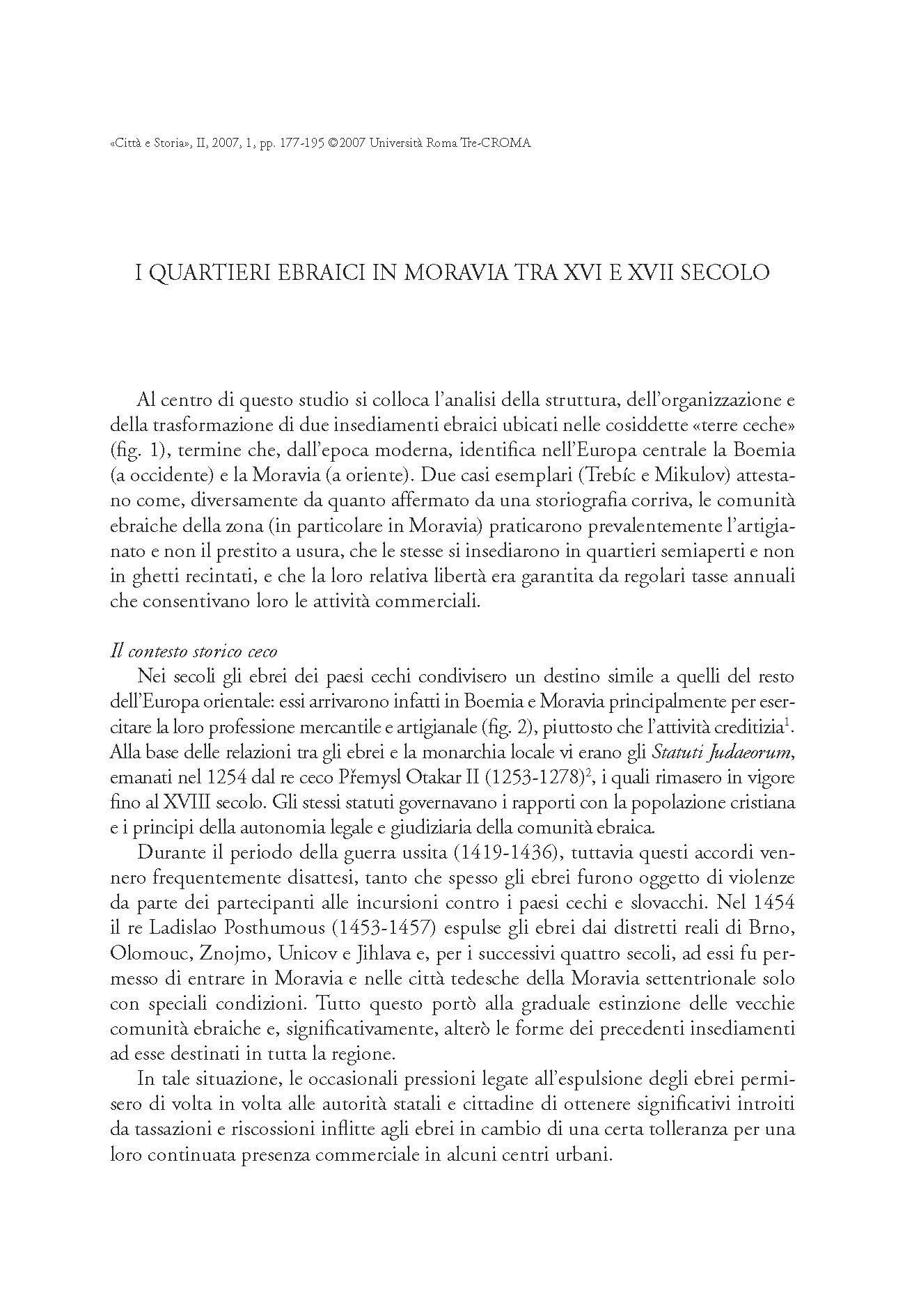I quartieri ebraici in Moravia tra XVI e XVII secolo
6,00 €
The core of this study is an analysis of the structure, organization, and transformation of two Jewish communities* located in the so-called «Czech lands», a term that for central Europe in the modern period signifies Bohemia (to the west) and Moravia (to the east).
Two exemplary situations (Trebíc and Mikulov) reveal that, differently from what is usually asserted in the literature, Jewish communities in this area (especially in Moravia) survived chiefly through artisanry rather than usurious money-lending, that they were located in freely-accessed urban quarters rather than in walled-in ghettos, and that their condition of relative freedom was guaranteed by the payment of annual taxes permitting them to carry on with their commercial activity.
The core of this study is an analysis of the structure, organization, and transformation of two Jewish communities* located in the so-called «Czech lands», a term that for central Europe in the modern period signifies Bohemia (to the west) and Moravia (to the east).
Two exemplary situations (Trebíc and Mikulov) reveal that, differently from what is usually asserted in the literature, Jewish communities in this area (especially in Moravia) survived chiefly through artisanry rather than usurious money-lending, that they were located in freely-accessed urban quarters rather than in walled-in ghettos, and that their condition of relative freedom was guaranteed by the payment of annual taxes permitting them to carry on with their commercial activity.

